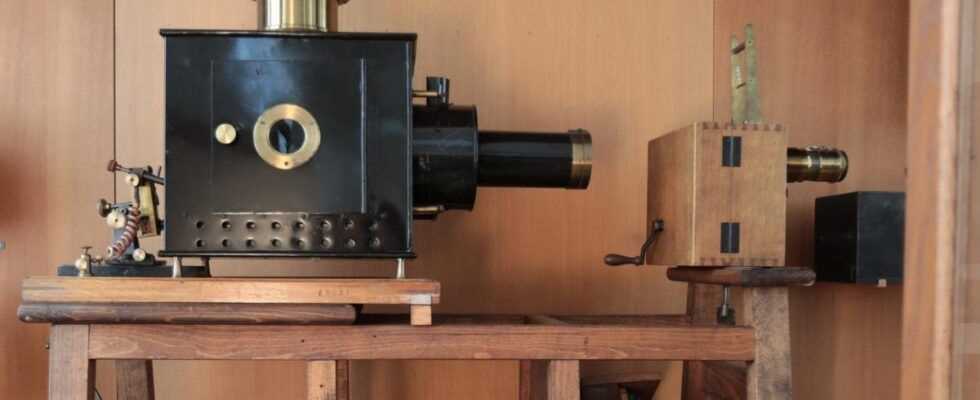Series“High-tech in the 19th century” (3/4). “Le Monde” remembers four founding technological objects that shook up the mentalities of their time. From 1895, the cinematograph was a dazzling success. On the white canvas, the French travel across continents and navigate through emotions. In their imagination, a well-framed reality gradually nibbles the territory of fantasies.
Legends are tough. In 1895, during the first screenings of the Lumière Brothers, the image of a locomotive grazing the camera did not scare the public away. “No trance, no fainting, Judge film historian Laurent Mannoni. More likely a slight reaction of fear. “
The spectators are nonetheless stunned. The projectionist has taken care of the element of surprise, he turns the crank slowly, the shots first scrolling one by one, then their scrolling accelerates, soon forming a single animated image made up of 16 shots per second.
The famous magician Georges Méliès witnesses the first public screening: “At this spectacle, we were all speechless, stunned, surprised beyond all expression. “ A journalist from Radical details his wonder to see, in another film, the sea come to life so naturally:
“This sea is so real, so restless, these bathers and these divers who go up, run on the platform, nibble their heads, are of a marvelous truth. (…) We were already collecting and reproducing the word, we are now collecting and reproducing life. “
Thunderbolt
Compared to other inventions, the cinematograph propagates at the speed of light. A few weeks after the first public screening in December 1895, which attracted 33 people to the Indian Salon of the Grand Café in Paris, the same room sees the parade up to 2,500 spectators per day. The following months, the cinema invites itself in big cities, like Lyon, Marseille, Nantes, Toulon, Nice, Clermont-Ferrand, but also in Le Havre, Pau, Royan, Angoulême or Saint-Etienne.
The success is lively, as recounted L’Express du Nord and Pas-de-Calais : ” LThe enthusiastic audience shouted “bis” and the picturesque scenes had to be scrolled a second time. ” The cinematography initially travels from fair to fair, from town to village, accompanied by sound effects and sales pitch. The ticket costs about one franc, which is the daily income of a cleaning lady. It gives the right to a screening of ten films of one minute each.
Then he moved into increasingly luxurious rooms, where films were accompanied by musicians and interspersed with comedy interludes. These places become high places of sociability. Their audience is recruiting among all social classes.
However, after the initial surprise, cinema attendance slowed down at the very end of the 19th century.e century. Quality works are not legion, and the public is demanding. Let us not imagine the French of 1895 devoid of all visual sensations: even before the cinematograph premiere, some Parisians were able to see photographs come to life as early as 1893, thanks to Edison’s kinetoscope. They were also able to have fun with very short cartoons, whether at Reynaud’s optical theater, from 1890, or by handling small toys. They were also able to attend magic lantern shows animated in a rudimentary way, broadcast “In fairs and schools thanks to traveling projectionists”, as Laurent Mannoni tells us.
You have 67.25% of this article left to read. The rest is for subscribers only.
